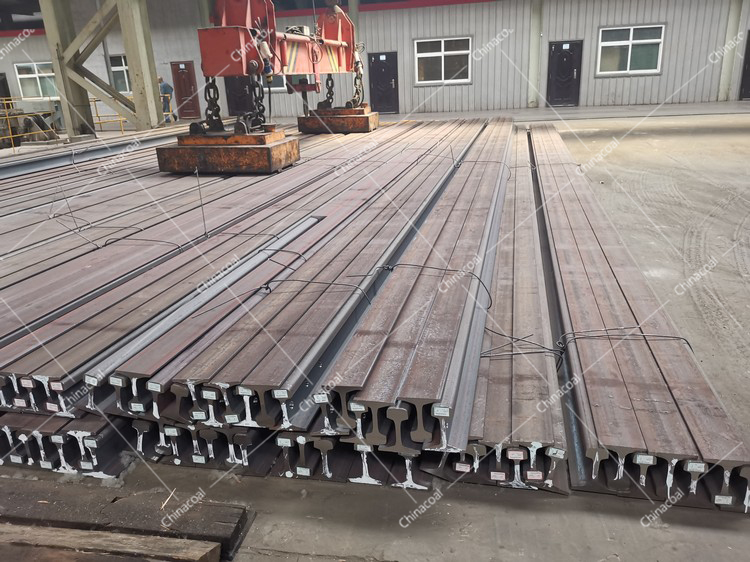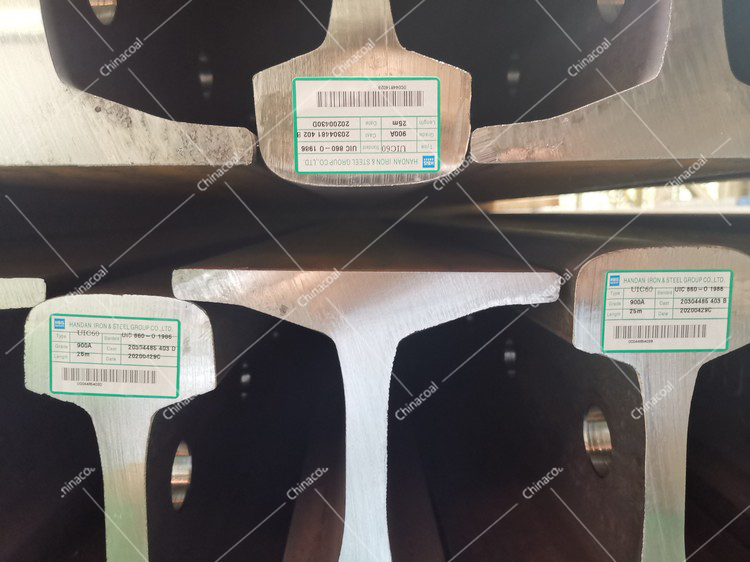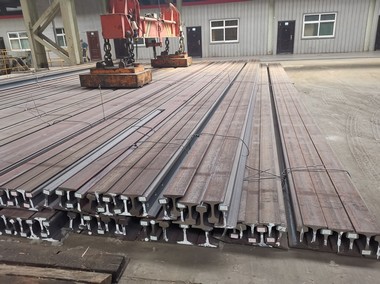
The allowable wear limit of the steel rail head is mainly determined by the strength and construction conditions. That is, when the rail wear reaches the allowable limit, one is to ensure that the rail has sufficient strength and flexural rigidity; the other is to ensure that the wheel flange does not collide with the joint splint under the most unfavorable conditions. In the "Rules for Railway Line Maintenance", the rail heads are divided into two categories, light injuries and severe injuries, according to the degree of wear and tear of rail heads. The corrugated rail is a lightly damaged rail if the loss of the corrugated rail is more than 0.5mm.
The formation of contact fatigue damage can be roughly divided into three stages: The first stage is the change in the shape of the rail tread. For example, the rail tread appears uneven, and the weld appears saddle wear. These irregularities will increase the impact of the wheel on the steel rail.

The second stage is the destruction of the steel rail head surface metal. Due to the cold work hardening of the rail head tread metal, the hardness of the rail head working surface continues to increase. When the total mass is 150~200Mt, the hardness can reach HB360; after that, the hardened layer is no longer Changes have occurred. For carbon steel rails, when the total mass is 200~250Mt, microcracks are formed on the surface of the rail head. For tracks with non-uniform elasticity, when the wheels and rails have obvious irregularities, the tension and pressure on the top surface of the rails are almost equal. If there are micro-patterns, the flexural stress and the residual stress have the same sign, which will greatly reduce the strength of the rail.
The third stage is the formation of steel rail head contact fatigue. Due to insufficient metal contact fatigue strength and multiple actions of heavy-duty wheels, when the point of maximum shear stress exceeds the shear yield limit, this point will become a plastic zone. Passing will inevitably produce slippage of the metal microstructure. After a period of operation, this slippage will accumulate and accumulate, which will eventually lead to the formation of fatigue cracks. With the increase of axle load, large-volume transportation conditions, inadaptability of rail material and rail type, the initiation and development of contact fatigue cracks will be accelerated.
The peeling near the fillet on the working edge of the steel rail head is mainly caused by the following three reasons: the longitudinal fatigue crack caused by the inclusion or contact shear stress causes the peeling; the guide wheel causes the shear stress alternating cycle on the curved outer rail to promote the outer rail Rail head fatigue causes peeling; poor maintenance of wheels and tracks accelerates the development of peeling. Usually peeling will cause stress concentration in the notch area and affect the ride comfort, increase the dynamic impact effect, and promote the generation and development of cracks in the notch area. The existence of the gap area will also hinder the development of metal plastic deformation and reduce the plastic index of the steel rail.

Steel Rail head nuclear injury is the most dangerous form of injury, which will suddenly break under the action of the train, which will seriously affect driving safety. The main cause of nuclear damage to the rail head is that there are tiny cracks or defects inside the rail head (such as non-metallic inclusions and white spots). Under the action of repeated dynamic loads, extremely complex problems appear in the rail head below the running surface of the rail. The combination of stress causes fine cracks to nucleate first, and then develop around the rail head until the steel around the nuclear injury is not enough to provide sufficient resistance, and the rail breaks abruptly under the premonitory situation. Therefore, the defects of the internal material of the rail are the internal cause of nuclear damage, and the external load is the external cause, which promotes the development of nuclear damage. The development of nuclear injury is related to the transportation volume, axle load and driving speed, and the plane state of the line. In order to ensure the safety of driving, the rails must be inspected regularly.
Measures to reduce steel rail contact fatigue damage include: purifying rail steel and controlling the shape of debris; adopting quenched rails, developing high-quality heavy rails, and improving the mechanical properties of rail steel; reforming the old rail reuse system and rationally using rails; rail polishing; Rail steel material classification, rail laying, etc.
